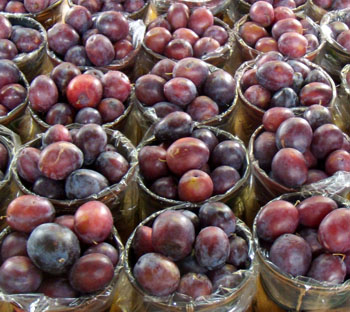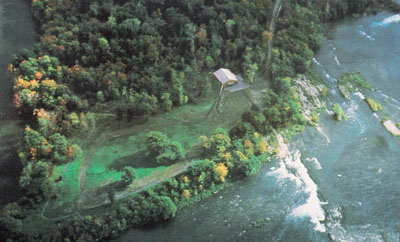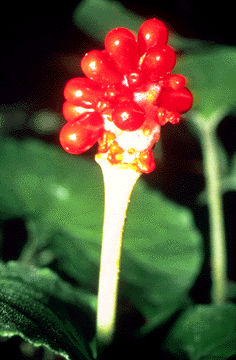Browse "Things"
-
Article
Playing-Card Money
Playing-card money was a type of paper money used periodically in New France from 1685 to the British Conquest in 1763. Playing cards issued by the king — later replaced with white cards cut to various shapes — held values equivalent to French livres.
"https://d2ttikhf7xbzbs.cloudfront.net/media/media/f1733c26-ebb9-45c6-be6b-aecf8c7a9503.jpg" // resources/views/front/categories/view.blade.php
https://d2ttikhf7xbzbs.cloudfront.net/media/media/f1733c26-ebb9-45c6-be6b-aecf8c7a9503.jpg
-
Macleans
Playing with fire
How North Vancouver’s Rebecca Rubin landed in the crosshairs of the biggest eco-terrorism investigation in U.S. history, and spent 10 years on the run. Ken MacQueen on a tale of sabotage, conspiracy, violence and betrayal.
"https://development.thecanadianencyclopedia.ca/images/tce_placeholder.jpg?v=e9dca980c9bdb3aa11e832e7ea94f5d9" // resources/views/front/categories/view.blade.php
https://development.thecanadianencyclopedia.ca/images/tce_placeholder.jpg?v=e9dca980c9bdb3aa11e832e7ea94f5d9
-
Article
Plea Bargaining
Plea Bargaining is a form of negotiation between a person charged with an offence and a crown prosecutor. The accused person usually negotiates through his counsel. Plea bargaining can take several forms.
"https://development.thecanadianencyclopedia.ca/images/tce_placeholder.jpg?v=e9dca980c9bdb3aa11e832e7ea94f5d9" // resources/views/front/categories/view.blade.php
https://development.thecanadianencyclopedia.ca/images/tce_placeholder.jpg?v=e9dca980c9bdb3aa11e832e7ea94f5d9
-
Article
Plover
Plover is the common name for a family (Charadriidae) of shorebirds with 2 subfamilies: Charadriinae, including true plovers; and Vanellinae, including lapwings.
"https://d2ttikhf7xbzbs.cloudfront.net/media/media/54ed14de-ebc8-46ba-80f7-c4f5bbef4130.jpg" // resources/views/front/categories/view.blade.php
https://d2ttikhf7xbzbs.cloudfront.net/media/media/54ed14de-ebc8-46ba-80f7-c4f5bbef4130.jpg
-
Article
Plum
Plum is a common name for certain members of genus Prunus of the rose family, which produce a smooth-skinned, elliptical, heart-shaped, oblong, ovate or round fruit with a flat seed.
"https://d2ttikhf7xbzbs.cloudfront.net/media/media/a7b2bcfe-316e-4c50-b69e-69d4fc395472.jpg" // resources/views/front/categories/view.blade.php
https://d2ttikhf7xbzbs.cloudfront.net/media/media/a7b2bcfe-316e-4c50-b69e-69d4fc395472.jpg
-
Macleans
PM and Delegates Revisit Asia
If omens mean anything, the members of Prime Minister Jean CHRÉTIEN's new version of Team Canada may have some cause for concern.This article was originally published in Maclean's Magazine on January 20, 1997
"https://development.thecanadianencyclopedia.ca/images/tce_placeholder.jpg?v=e9dca980c9bdb3aa11e832e7ea94f5d9" // resources/views/front/categories/view.blade.php
https://development.thecanadianencyclopedia.ca/images/tce_placeholder.jpg?v=e9dca980c9bdb3aa11e832e7ea94f5d9
-
Article
Pocket Gopher
Pocket Gopher (Geomyidae), family of medium-sized, solitary, nonhibernating, subterranean rodents.
"https://d2ttikhf7xbzbs.cloudfront.net/media/media/369f05da-3657-43ac-8d8f-51afdcb5fc9d.jpg" // resources/views/front/categories/view.blade.php
https://d2ttikhf7xbzbs.cloudfront.net/media/media/369f05da-3657-43ac-8d8f-51afdcb5fc9d.jpg
-
"https://d2ttikhf7xbzbs.cloudfront.net/media/media/bb3cae34-7af8-4118-acfb-e7bdd5f3128f.jpg" // resources/views/front/categories/view.blade.php
https://d2ttikhf7xbzbs.cloudfront.net/media/media/bb3cae34-7af8-4118-acfb-e7bdd5f3128f.jpg
-
Macleans
POGs Appeal
After boy scout meetings in Calgary, 13-year-old Johnny Seipel and 12-year-old Kristopher Pataky play their latest favorite game in a corner of the coatroom, in among the racks of snowsuits, scarves and winter mitts.This article was originally published in Maclean's Magazine on February 27, 1995
"https://development.thecanadianencyclopedia.ca/images/tce_placeholder.jpg?v=e9dca980c9bdb3aa11e832e7ea94f5d9" // resources/views/front/categories/view.blade.php
https://development.thecanadianencyclopedia.ca/images/tce_placeholder.jpg?v=e9dca980c9bdb3aa11e832e7ea94f5d9
-
Article
Point Amour Lighthouse
In 1858 the Point Amour Lighthouse was built to help sailors through the dangerous waters of the Strait of Belle Isle between Labrador and Newfoundland.
"https://development.thecanadianencyclopedia.ca/images/tce_placeholder.jpg?v=e9dca980c9bdb3aa11e832e7ea94f5d9" // resources/views/front/categories/view.blade.php
https://development.thecanadianencyclopedia.ca/images/tce_placeholder.jpg?v=e9dca980c9bdb3aa11e832e7ea94f5d9
-
Article
Pointe-du-Buisson Archaeological Sites
Pointe-du-Buisson is a small point of land (21 ha) extending into the waters of Lake St Louis (a widening of the St-Lawrence River) at the convergence of the Ottawa River.
"https://d2ttikhf7xbzbs.cloudfront.net/media/media/b8bf0f8e-3c7a-4b11-9fa4-efe4e14a1650.jpg" // resources/views/front/categories/view.blade.php
https://d2ttikhf7xbzbs.cloudfront.net/media/media/b8bf0f8e-3c7a-4b11-9fa4-efe4e14a1650.jpg
-
Article
Poison Ivy
Poison ivy is the common name collectively referring to a small genus (Toxicodendron) of woody perennial plants of the cashew family (Anacardiaceae). Poison ivy is closely related to and sometimes classified with the Sumacs in the genus Rhus.
"https://development.thecanadianencyclopedia.ca/images/tce_placeholder.jpg?v=e9dca980c9bdb3aa11e832e7ea94f5d9" // resources/views/front/categories/view.blade.php
https://development.thecanadianencyclopedia.ca/images/tce_placeholder.jpg?v=e9dca980c9bdb3aa11e832e7ea94f5d9
-
Article
Poisonous Plants
Toxic PropertiesToxic reactions generally are caused by chemical compounds that are produced by plants or absorbed from soil. These compounds produce undesirable physiological responses in individuals or animals.
"https://d2ttikhf7xbzbs.cloudfront.net/media/media/3118a894-b3ac-4aea-92be-4e8966b78166.jpg" // resources/views/front/categories/view.blade.php
https://d2ttikhf7xbzbs.cloudfront.net/media/media/3118a894-b3ac-4aea-92be-4e8966b78166.jpg
-
Article
Polish Music in Canada
The first Polish settlement in Canada was established by Kashubian peasants in the early 1860s in Renfrew County, south of Pembroke, Ont. In 1875 a Polish parish was organized and a church built at the place which became the village of Wilno in the 1880s.
"https://development.thecanadianencyclopedia.ca/images/tce_placeholder.jpg?v=e9dca980c9bdb3aa11e832e7ea94f5d9" // resources/views/front/categories/view.blade.php
https://development.thecanadianencyclopedia.ca/images/tce_placeholder.jpg?v=e9dca980c9bdb3aa11e832e7ea94f5d9
-
Article
Polar Bear
The polar bear (Ursus maritimus) is the largest living species of bear. They are found throughout the circumpolar Arctic. In Canada, this means polar bears live in parts of the Yukon, the Northwest Territories, Nunavut, Manitoba,Ontario, Quebec and Newfoundland and Labrador. Polar bears are both culturally and economically significant to the Inuit. As climate change continues to reduce their sea ice habitat, polar bears are increasingly threatened.
"https://d2ttikhf7xbzbs.cloudfront.net/media/media/7567797a-10ef-4939-9b3f-818ad7f357fa.jpg" // resources/views/front/categories/view.blade.php
https://d2ttikhf7xbzbs.cloudfront.net/media/media/7567797a-10ef-4939-9b3f-818ad7f357fa.jpg
